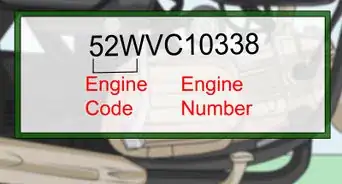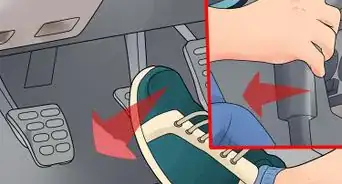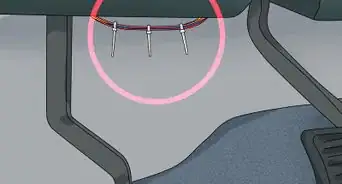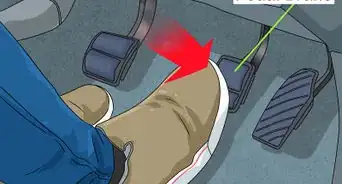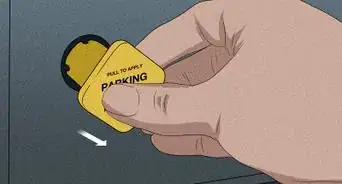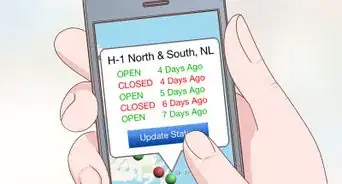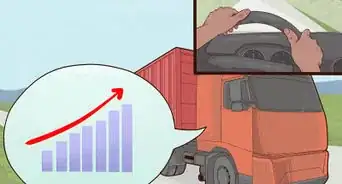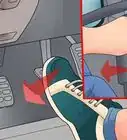X
wikiHow is a “wiki,” similar to Wikipedia, which means that many of our articles are co-written by multiple authors. To create this article, volunteer authors worked to edit and improve it over time.
Learn more...
Being able to handle unstable and oversize loads is a useful skill for any forklift driver - whether or not you handle them frequently. If you do, or are planning to, all the more reason to develop skills, knowledge, tips and tricks to do it safely!
Steps
-
1Identify the load. Is it an oversize load or an unstable load? Why is it an unstable load? Is it double-stacked? Is it top-heavy or heavier on one side than another?
- Oversize loads are generally considered "Oversize" if they block the forklift driver's field of view, or they are exceptionally wide or tall
- Unstable loads come in all shapes and sizes For Example; Top heavy loads, Double/triple/quad stacked loads, pallet stacks, IBC's and bulk sacks, unwrapped loads, etc.
-
2Check if the load is safe to travel. If not, can it be reduced in size? With single unit oversize loads (e.g. big machines) this probably won't be possible unless absolutely necessary. Double/triple/quad stacked pallets on the other hand can easily be unstacked and transported in a more safe manner. Always stick to the safer method of transporting loads until you are comfortable and experienced with how the loads behave.Advertisement
-
3Ask for help and advice if you are unsure.
- If you are unsure if the load can be moved, ask a trusted supervisor or manager for tips and advice.
- If you are not comfortable moving the load, you can request a spotter, ask for help/advice/tips from another forklift driver, or ask them to show you how they would safely move the load.
-
4Plan the route, transport, and weight of the Load.
- You still shouldn't have tried moving the load yet as you don't even know its weight, let alone other factors!
- Check the load's weight and if it is within the forklift's lifting capacity, and the load centre distance isn't too great - this is really important for heavy oversize loads. Even if you were to lift a 1 ton load with a 2 ton forklift, if the load's load centre distance exceeds what the forklift is rated for, you can still end up with a front tip over!
- When dealing with oversize loads, consider your route of travel, especially if you are indoors! Low doorways, narrow passages, pedestrians, and other machinery are always to be considered and accounted for how you are going to navigate past them.
- If the area is very busy, consider requesting the use of a spotter to navigate through high traffic areas with an oversize load.
-
5Start lifting and checking the stability of the load. You can finally start lifting! Lift the load and watch to determine its stability - oversize loads may not always be unstable, but unstable loads always are!
- Watch the load as you lift it, does it excessively shake and sway? or does it come to a quick stop?
- Slowly drive forwards, reverse, turn with the load. Observe if/how it moves.
- If you have access to a pallet jack you can try lifting it and giving it a bit of a shake, this can tell you a lot about how the load will handle when it will be forklifted.
-
6Manage a load that starts to fall. Loads, especially unstable loads, fall off forklifts sometimes. This simply happens, even the most experienced forklift operators tip loads occasionally. The important thing is how to recognize this and handle it, potentially stop it from becoming a bigger issue/hazard, and if possible, prevent it entirely.
- Sometimes you may see a load start to tip over sideways, almost looking like slow motion until it crosses the point of no return and tips off the forks (usually off one side or the other). If you spot this early, lower your forks as quickly and as carefully as you can and you might be able to prevent it!
- If a load is already falling or very likely to fall soon (unavoidable) let other workers around you know to stay clear.
- Never, ever, attempt to stop a load from falling with your hands, feet, or any body part as operators have been seriously injured or killed in unexpected ways by doing this.
- If you suspect a load is going to tip over but it hasn't yet: stop, think, and consider other means of transport - this could be as simple as grabbing it from the other end, un-stacking and handling it as single loads, or it could mean using pallet jacks, bigger forklifts, or even insisting on mobile cranes being hired to move an oversized load. If you are seriously concerned about a tip over, make sure you let your supervisor/management know.
-
7Know how to ideally transport an unstable or oversize load. This advice largely varies on the type, shape, and size of the unstable or oversize load. However, here are some useful tips:
- Don't accelerate or brake too hard with an oversize load, and especially with an unstable load!! Unstable loads are likely to fall off the forklift tines if you brake too hard. Similarly, oversize loads may also fall off or end up tipping the entire forklift over!
- Take all turns slowly when you're navigating with oversize and unstable loads. For unstable loads, again, this will help stop them falling off the fork tines. For oversize loads, slower turns are recommended for the same reason, as well as having more reaction time to stop, should the load be close to hitting something. It's easy to forget how much your maneuverability goes down when travelling with an oversize load.
- Avoid picking up loads with forward tilt unless its a stable, oversize load. Otherwise, unstable loads such as pallet stacks, double stacked pallets, unwrapped pallets, etc will easily fall if you attempt to pick them up with forward tilt. Lift with mast vertical or slight back tilt, even using full back tilt isn't ideal for unstable loads as they might end up falling back onto the forklift/mast and overhead guard!
- Always fully insert the forklift tines when lifting oversize and unstable loads - while only partially inserting them is useful for loading and unloading trucks, for oversize and unstable loads it's a big no-no as this will easily cause the load to fall off!
- Lastly if in doubt, go slow. This is usually the best piece of advice in learning to handle oversize and unstable loads. Speed and efficiency can always come later on when you are comfortable and more experienced handling the loads and how they move/behave.
Advertisement
Warnings
- Never, ever, attempt to stop a load from falling with your hands, feet, or any body part. You can be seriously injured or killed by doing this.⧼thumbs_response⧽
- Don't Travel fast with oversize and unstable loads - they will either fall off or worse - cause the forklift to tip over!⧼thumbs_response⧽
- Never raise an oversize/unstable load with someone standing too close by (or any load for that matter) - politely ask them to move away if needed, and treat each lift as if it was likely to fall off (because one day it very well might!!)⧼thumbs_response⧽
- Don't let yourself be rushed by other workers or truck drivers, in an ideal world this should never happen, but some people are impatient.⧼thumbs_response⧽
Advertisement
About This Article
Advertisement
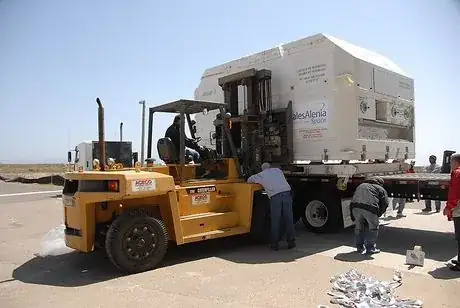

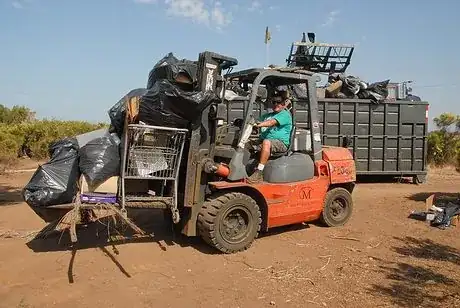
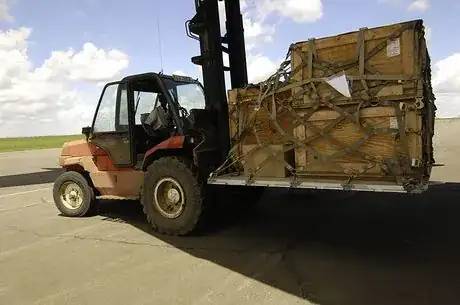
.webp)
